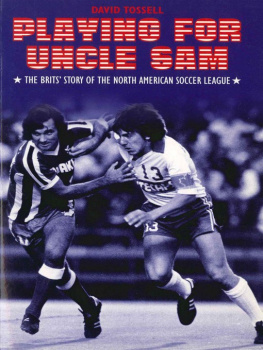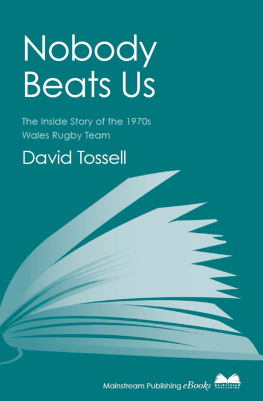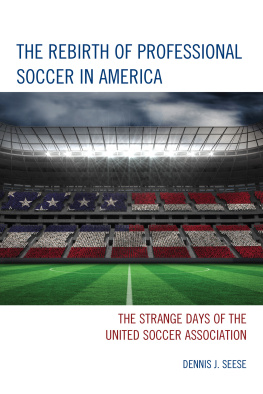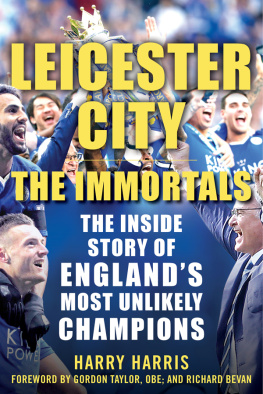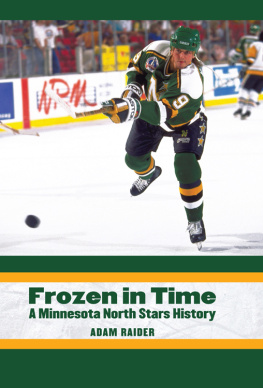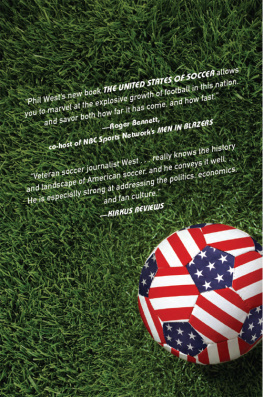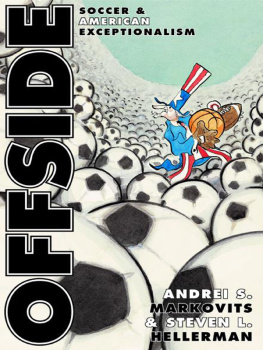About the Author
David Tossell has more than 20 years experience in sports journalism and public relations. Formerly Executive Sports Editor of Today, he is currently head of European public relations for the National Football League (NFL). He is the author of two previous books, including Seventy-One Guns: The Year Of The First Arsenal Double, published by Mainstream.
PLAYING FOR UNCLE SAM
The Brits Story of the North American Soccer League
David Tossell

This ebook is copyright material and must not be copied, reproduced, transferred, distributed, leased, licenced or publicly performed or used in any way except as specifically permitted in writing by the publishers, as allowed under the terms and conditions under which it was purchased or as strictly permitted by applicable copyright law. Any unauthorised distribution or use of this text may be a direct infringement of the authors and publishers rights and those responsible may be liable in law accordingly.
Epub ISBN: 9781780574721
Version 1.0
www.mainstreampublishing.com
Copyright David Tossell, 2003
All rights reserved
The moral right of the author has been asserted
First published in Great Britain in 2003 by
MAINSTREAM PUBLISHING (EDINBURGH) LTD
7 Albany Street
Edinburgh EH1 3UG
ISBN 1 84018 748 4
No part of this book may be reproduced or transmitted in any form or by any other means without the permission in writing from the publisher, except by a reviewer who wishes to quote brief passages in connection with a review written for insertion in a magazine, newspaper or broadcast.
Copyright permissions cleared by author. The author has tried to trace all copyright details but where this has not been possible and amendments are required, the publisher will be pleased to make any necessary arrangements at the earliest opportunity.
A catalogue record for this book is available from the British Library
Contents
Acknowledgements
One of the most enjoyable aspects of the preparation of this book was discovering how many people shared my enthusiasm for telling the story of the British involvement in the North American Soccer League (NASL). My huge gratitude is due to all of those listed as interviewees at the end of the book, many of whom were also kind enough to put me in contact with former colleagues. In addition, a lot of people opened doors through the sharing of telephone numbers and e-mail addresses or the delivery of messages, notably Mal Butler, Roy Collins, Christopher Davies, Roger Davies, Paul Donovan, Paul Futcher, Richard Green, Frank Juliano, Paul Mace, Alan Merrick, Mike Preston, Neil Rioch, Michael Signora, Paul Tinnion, Roger Wash, Dave Wasser, Phil Woosnam and Gary Wright.
Special thanks are due to Bob McNab and Richard Whitehead, for their input and detective work, and to Vince Casey and Alan Merrick, who generously made their photographic collections available for my use. Jack Huckel and Colin Jose at the American Soccer Hall of Fame deserve mention for their assistance, while all of this would have been for nothing without the backing of everyone at Mainstream Publishing.
Some people contribute in ways beyond the practical, like Sally, whose long-term support and organisation of family life have helped to make projects like this possible.
To Pete Abitante, thanks for professional guidance and personal friendship. Lucy, this book could not have been undertaken without your encouragement, nor completed without your patient proofreading. Finally, thanks to my mum, for unwavering support in all areas of my life.
Introduction
The BBCs Kenneth Wolstenholme may have declared famously that it was all over as Geoff Hurst slammed the ball into the West Germans net for the third time, but for the North American Soccer League the emphatic underlining of Englands World Cup triumph was just the start.
When Bobby Moore led the red-shirted English heroes into the Wembley sunshine on that memorable July afternoon in 1966, eight million viewers were tuning in on their televisions in the United States. Considering that they had either forgone their weekend lie-in if they were on the west coast or were fitting the game around their brunch arrangements on the eastern side of the country, NBCs audience for the events being played out several thousand miles away was considered an outstanding success. And it offered final, indisputable confirmation of what several influential and wealthy American folks had been suspecting for a while: that their country was ready to embrace the world game of football. The nations long wait for a top-tier professional soccer league was about to come to an end.
The appearance of Alf Ramseys men on American screens could not have been better timed. The 60s were a boom time for sport in the US, the pervading mood one of expansion and experiment. Improved communication and travel had opened up geographical areas until recently unexplored by the professional leagues, while increased and enhanced television coverage was giving sport more exposure than ever before. The American public had more disposable income and were keen to find ways of spending it. Sport offered a popular option and a welcome diversion from years of civil unrest, a debilitating war in Vietnam and a series of shocking assassinations of major political figures.
In American football, the gridiron version, the established National Football League (NFL) had faced a challenge from the newly formed American Football League, forcing a merger that brought about the advent of the Super Bowl and pushed the league to heights of popularity no other US sport could match. Not that the others were struggling. The decade saw every major sports league increase by at least six teams as burgeoning cities lobbied for franchises. Into such a climate of pioneering came professional soccer, beginning a saga that, over the course of almost two decades, would mix high drama with comedy, sporting excellence with moments of pure farce.
This book does not set out to be the definitive history of the NASL (a thorough examination of the reasons behind the leagues collapse could fill a volume on its own). Rather, it is the tale much of it anecdotal of the British players, coaches and administrators who were part of the league. And, whatever the headline during the NASLs roller-coaster existence, the Brits were never far from the heart of the story.
From the moment America opened its sporting borders to soccer, those from the British Isles were at the front of the check-in line. Some, like George Best and Rodney Marsh, would make the journey because they felt English football had nothing left to offer them. Others went to prove a point, like World Cup goalkeeper Gordon Banks, who demonstrated that it was possible to keep the best forwards in the world at bay with only one eye. But it was not just the big-name internationals that crossed the Atlantic to join up with their peers, Pel, Beckenbauer and Cruyff. A whole legion of First Division players and lower-league journeymen extended their careers or forged new ones in the NASL. Men like Peter Beardsley, Peter Withe and Alan Brazil used it as a finishing school for great things back home, while some, like Alan Willey and Paul Child, virtually unknown in their homeland, stayed on to perform feats that rank alongside those of any of the NASLs most recognisable names.
Across the water they went, the celebrity and the unknown, the young and the old, the richly talented and the poorly appreciated. An 18-year procession of players lured by the opportunity to play in the land of Uncle Sam. This is their story.

